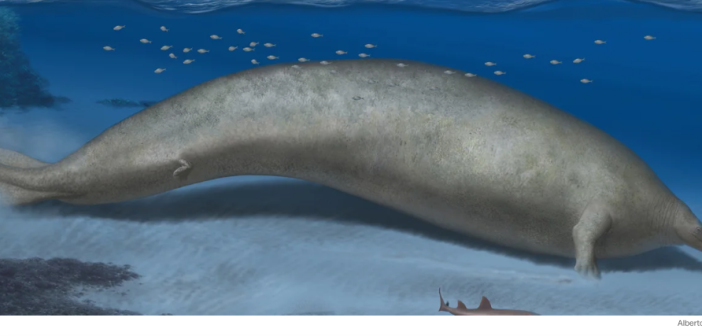You think whales are big now? You should have been here 39 million years ago.
That’s when a 200-ton whale, the Perucetus, swam the coastal areas of the world, with its flexible body moving slowly in waves from head to toe. Paleontologists found a fossil of the giant whale in Peru and they say it is probably the heaviest animal that ever lived. In fact, it is two or three times heavier than the blue whale, the largest whale today.
“This is a weird and stupendous fossil, for sure,” Nicholas Pyenson, a paleontologist at the Smithsonian, told The New York Times.
A report in Nature last week says the fossil of the Perucetus, found in southern Peru, indicates it had a barrel-like body and probably fed like a giant manatee, grazing on the ocean floor. The paleontologists also say the whale they found had reached sexual maturity (don’t ask) but was probably still growing because of unfused ends of its vertebrae.
The excavation in Peru took several years because the fossil was embedded in hard rock. The scientists determined the whale lived 39 million years ago, when the Earth and oceans were cooling. They say the fossil shows the evolution of whales, which started out as dog-sized mammals about 50 million years ago. They were replaced by aquatic whales the size of school bus that lived in the water but still had tiny hind legs for movement on land.
Then came the Perucetus. Mario Urbino, a paleontologist from the Museum of Natural History in Lima, found the fossil in 2010 when he was walking across the Atacama Desert and he saw a bulge in the ground. He started digging.
Read more at https://www.cnn.com/2023/08/02/world/ancient-colossal-whale-perucetus-colossus-scn/index.html and see the video below:




